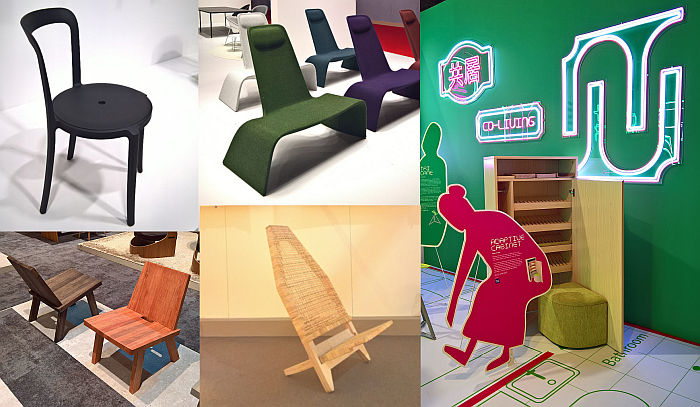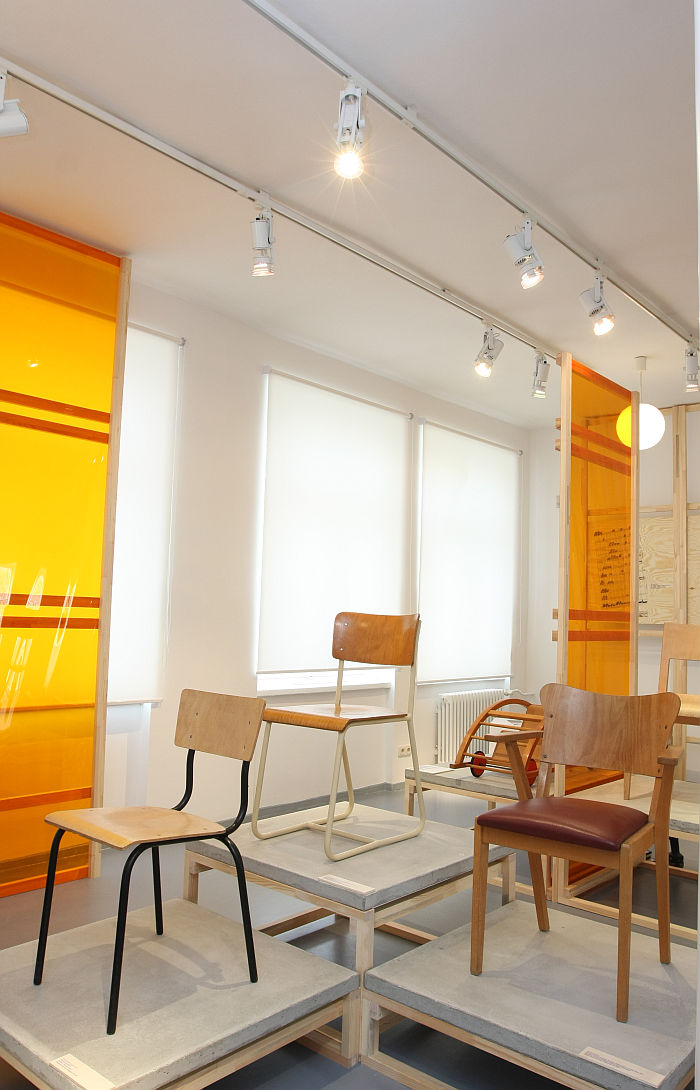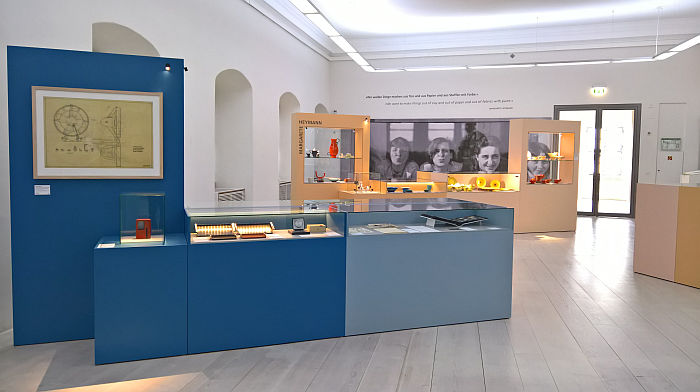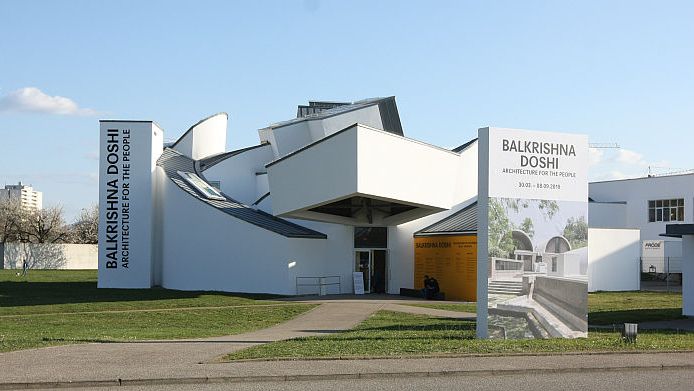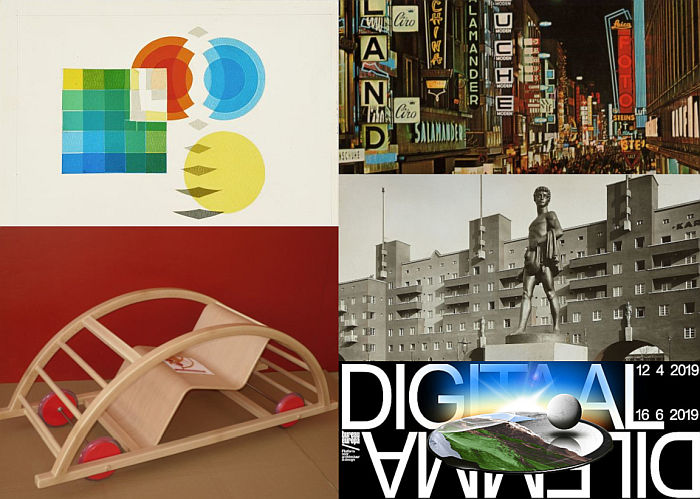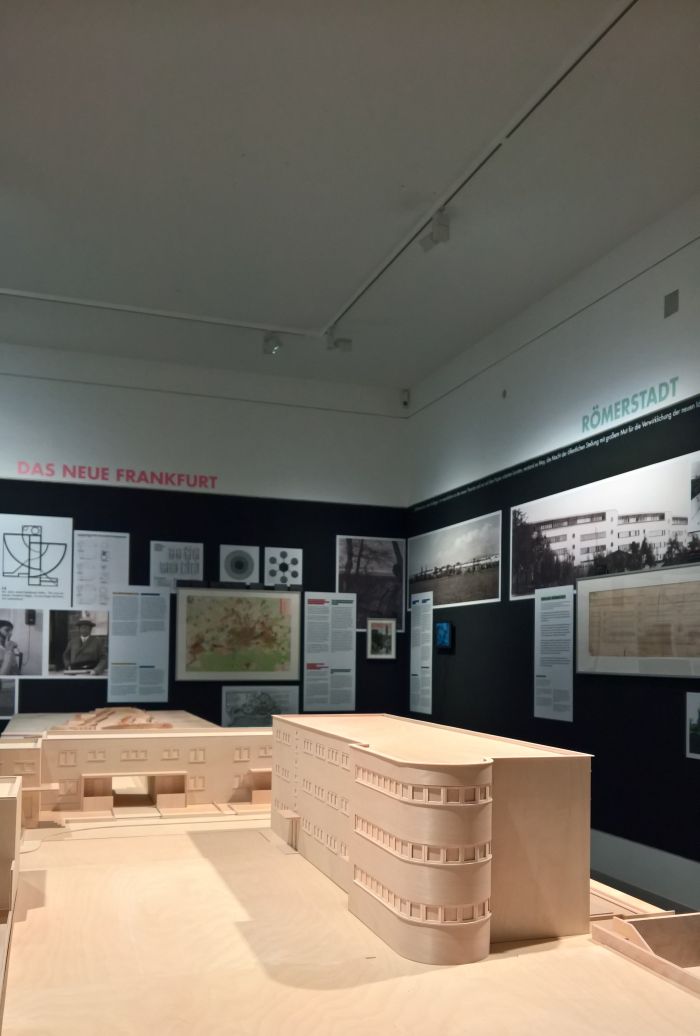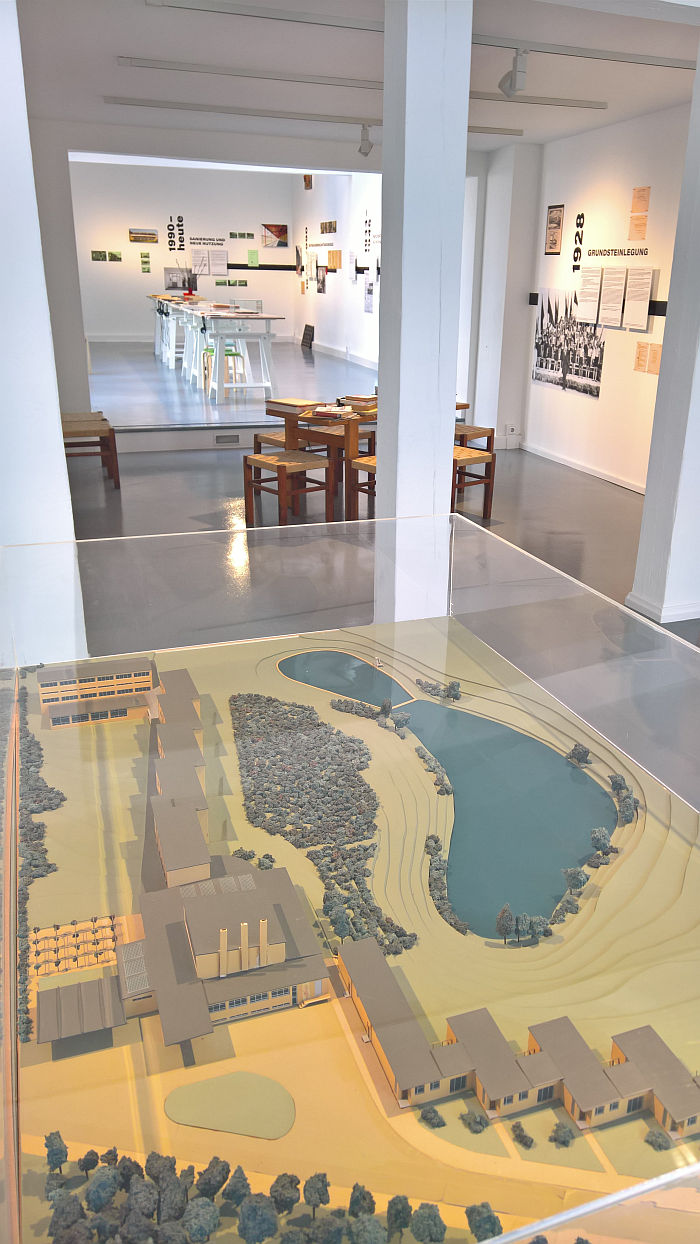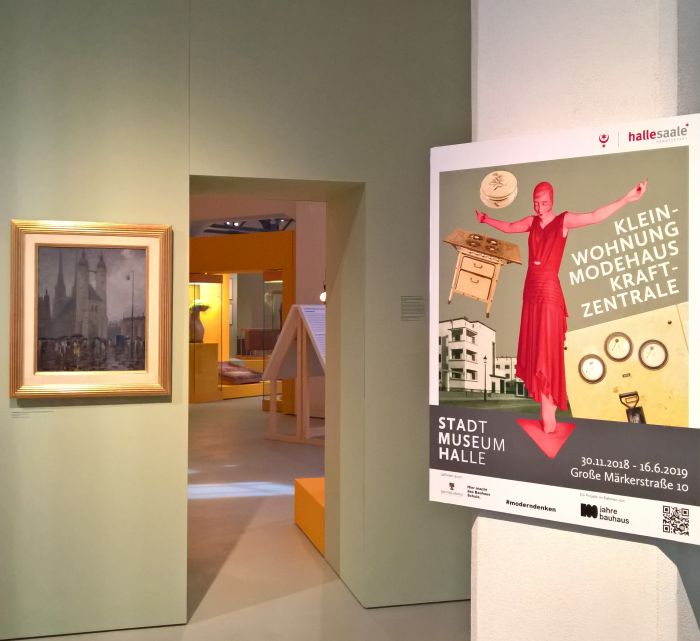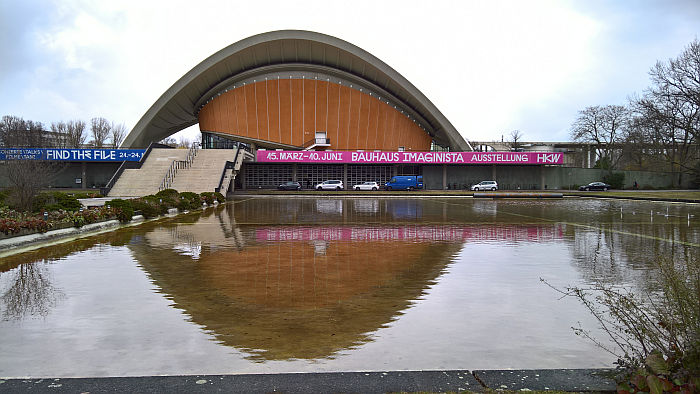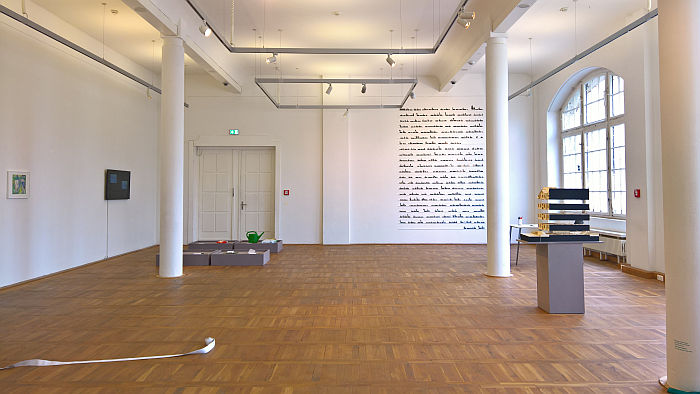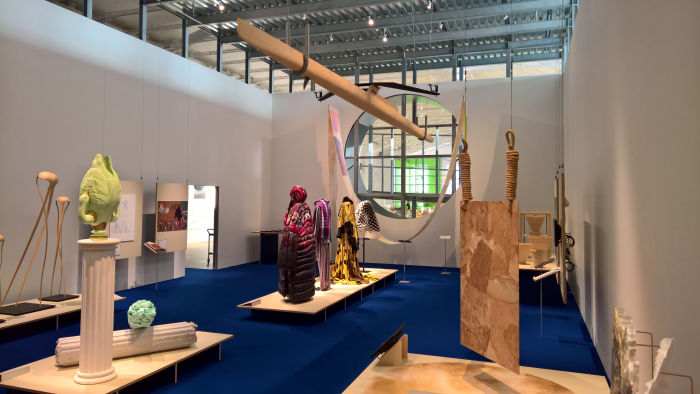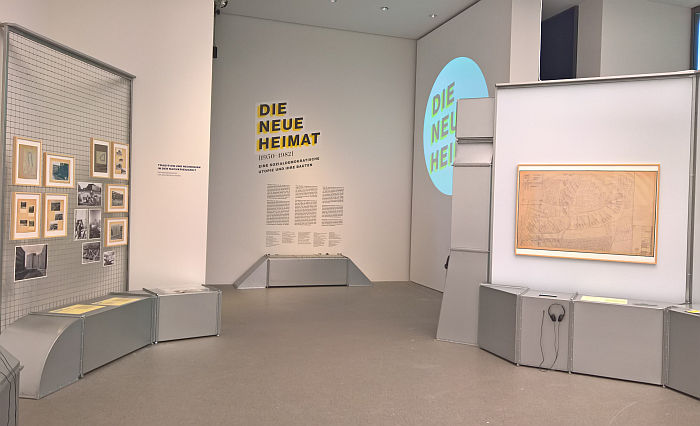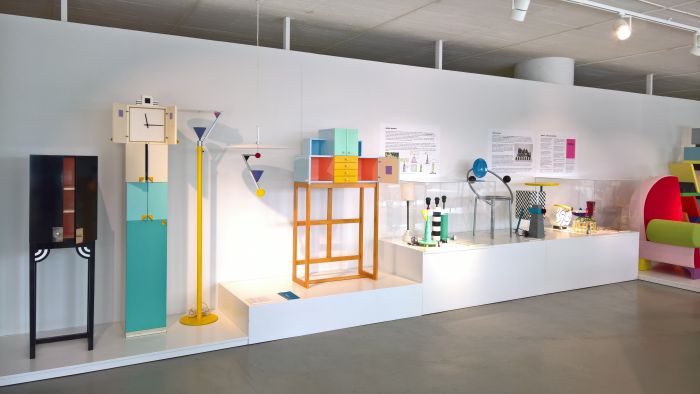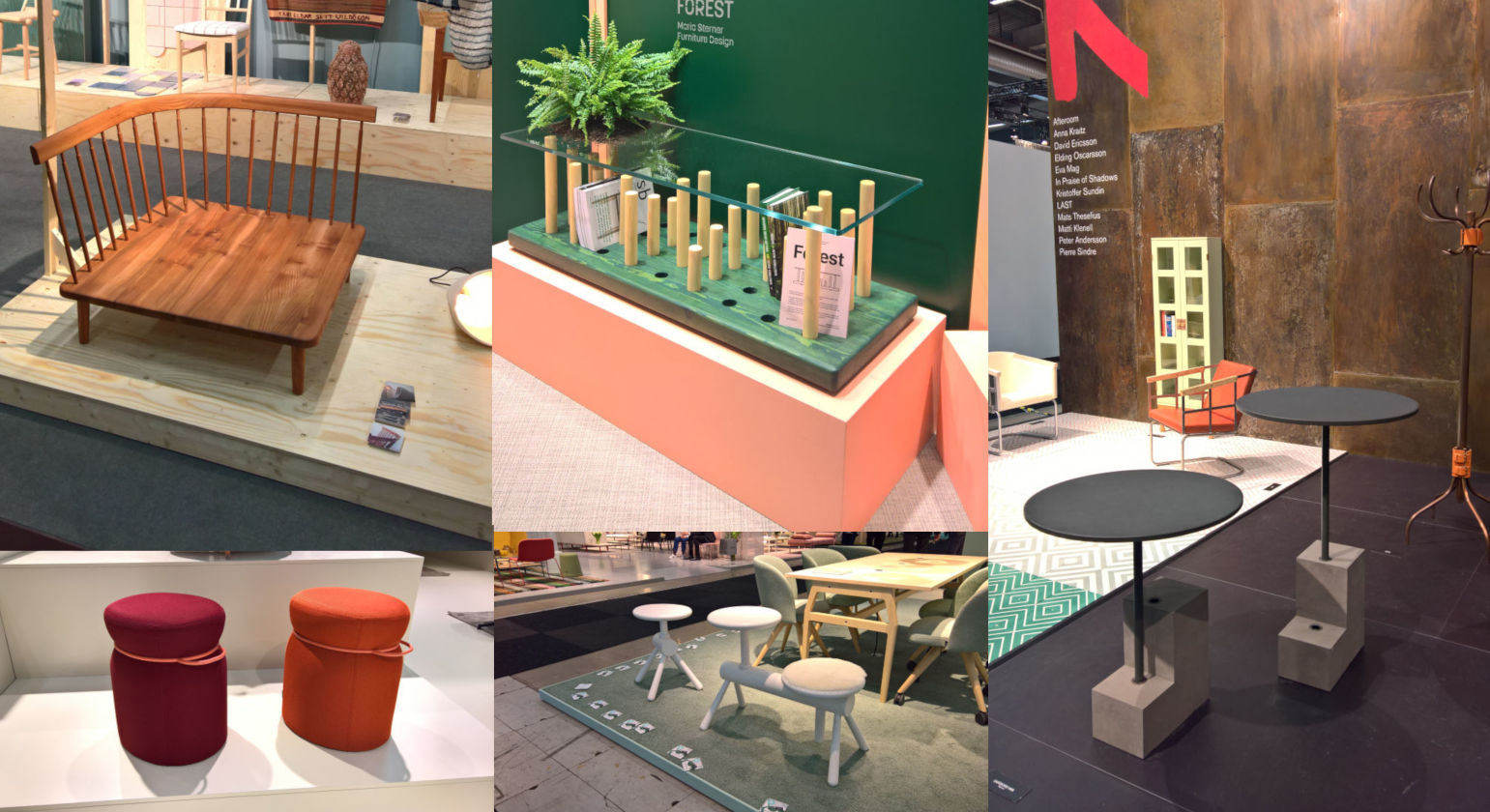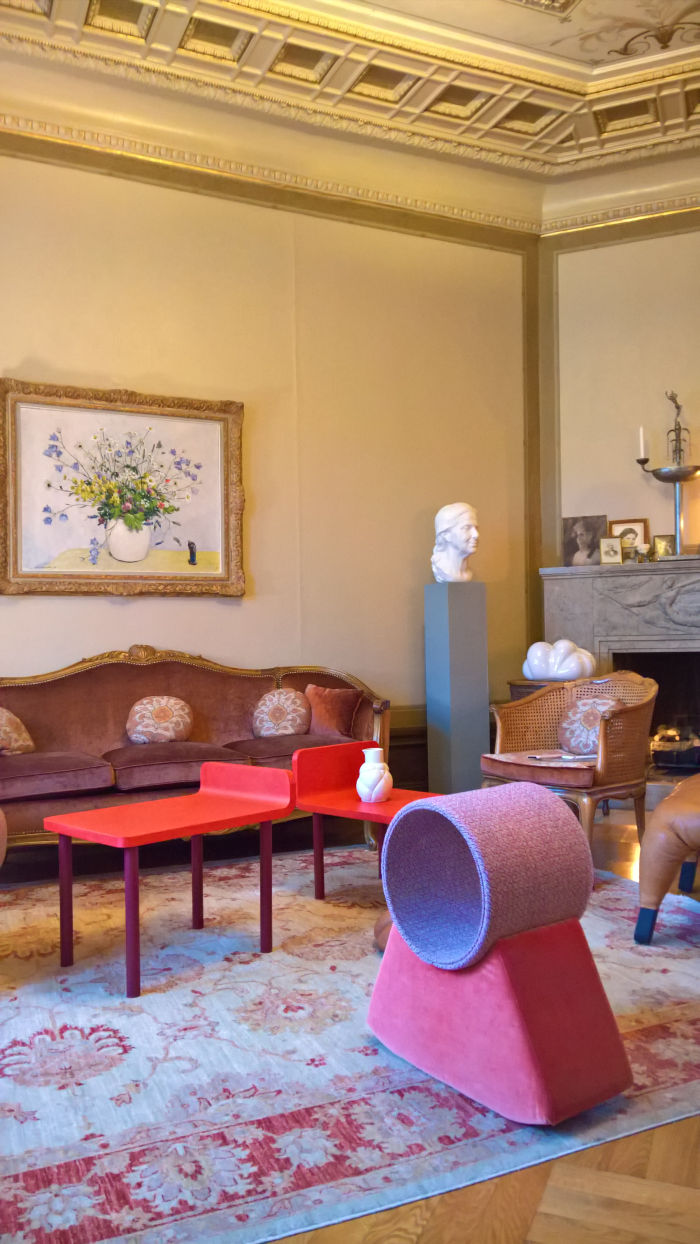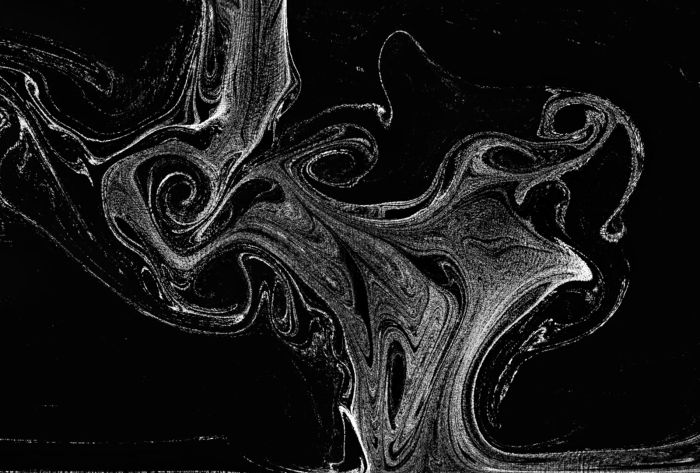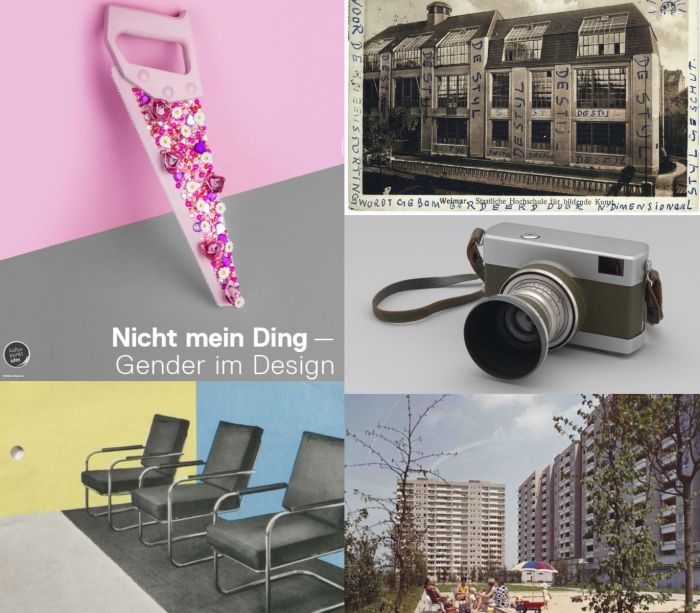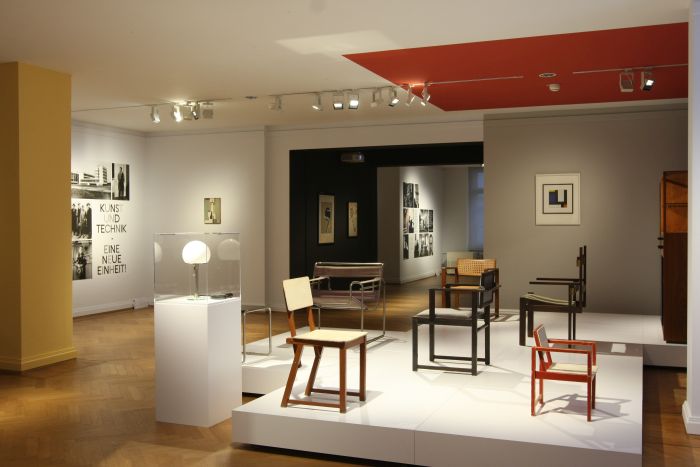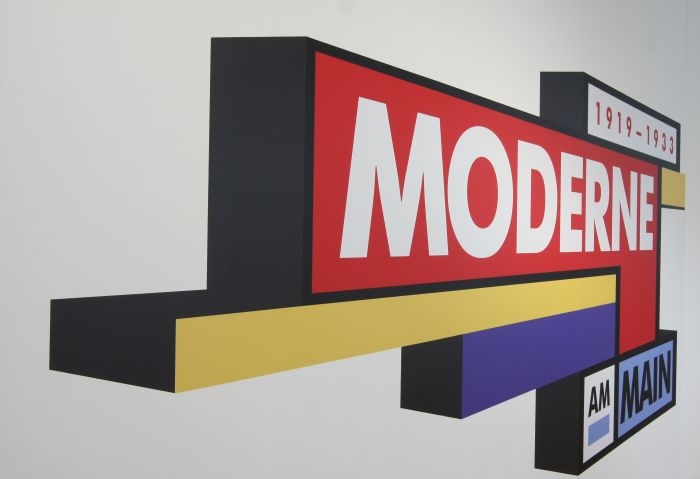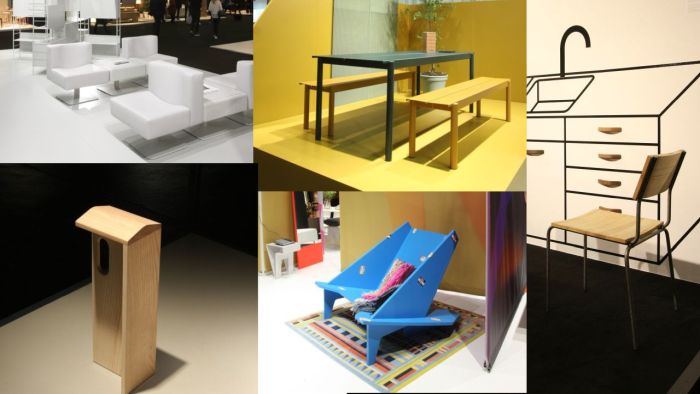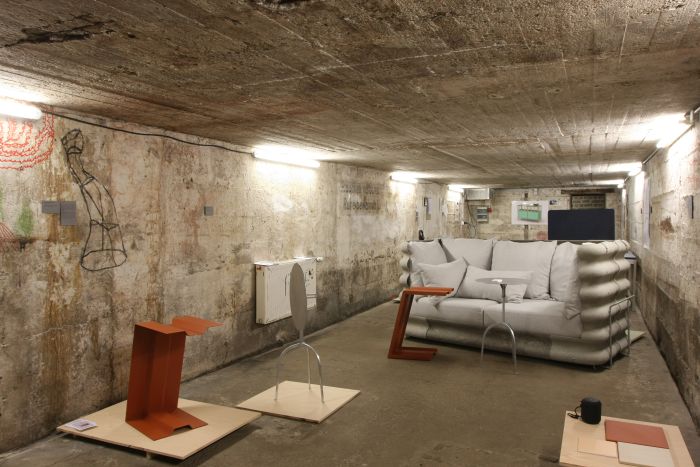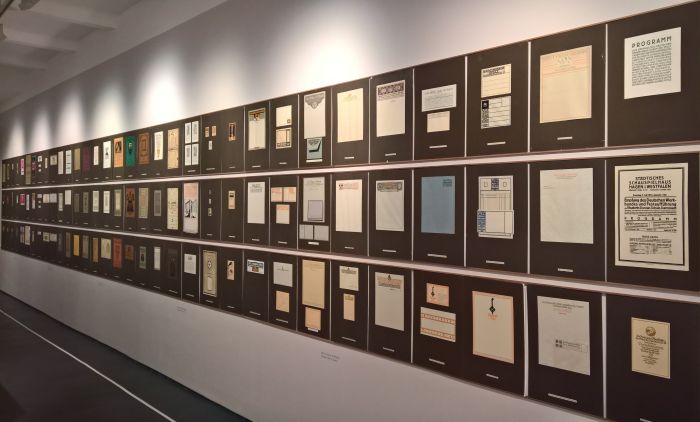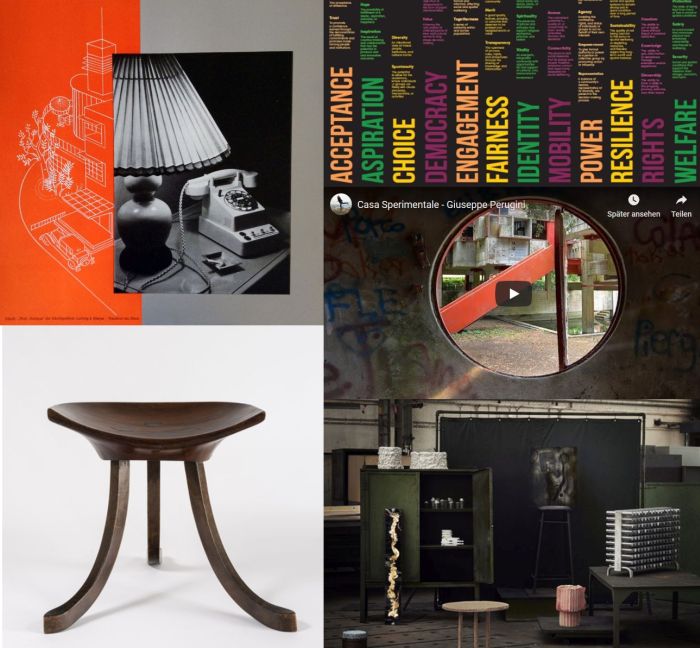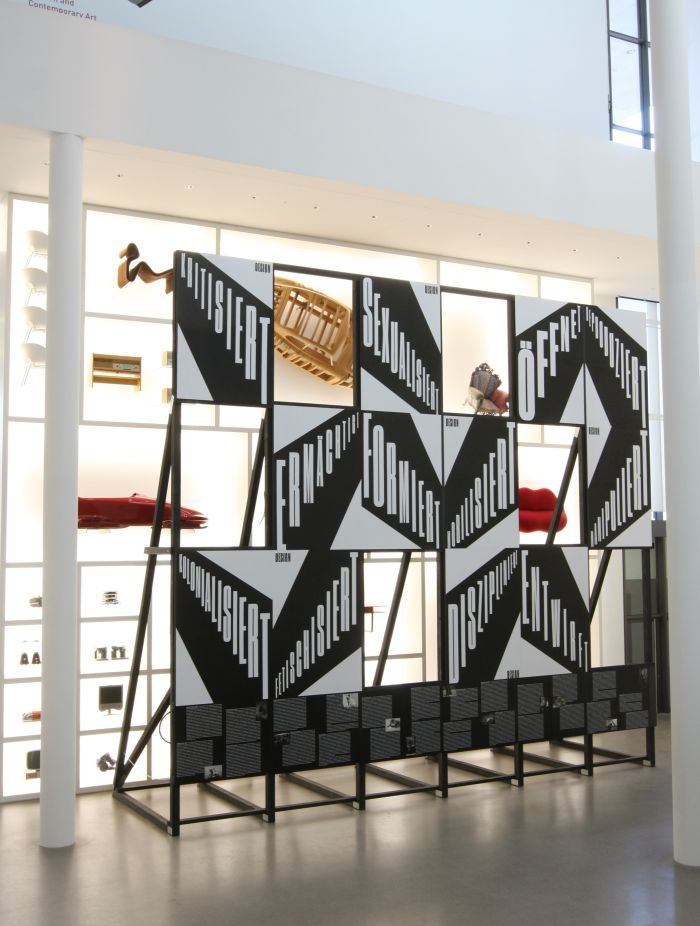Category: Exhibitions and Shows
Milan Furniture Fair 2019: High Five!!
Aside from the, inevitable, consolidation the main theme at Milan Furniture Fair 2019, and the one which occupied us much more than that which was on show for our perusal, is/was the international furniture industry’s increasing hunger for data; a hunger which embodied itself at Milan 2019 in a exponential surge in the number of manufacturers requiring potential stand visitors to either pre-register, submit a business card or have their Fair ticket scanned before being allowed onto the stand.
No data. No entry.
And a state of affairs on which we have penned several hundred (agitated) words; but, this is neither the time nor place for them. We will however return to them at a later date, not least because the scale of the shift we witnessed at Milan 2019 suggests that as a development it is on it way to becoming standard. Which ain’t good.
Elsewhere the halls of Milan were busier with visitors in 2019 than we remember them for many a long a year, the weather in 2019 cooler than we remember for many a long year, and despair and delight stood as close to one another as every year
And in that sense, and as ever accepting we may have missed one or two gems, not least because we decided against sharing our data in order to view new items of furniture manufacturers had, allegedly, brought to Milan to promote, and so subsequently weren’t on a lot of stands, a smow Blog Milan 2019 High Five!!
Shaping everyday life! Bauhaus modernism in the GDR @ the Dokumentationszentrum Alltagskultur der DDR, Eisenhüttenstadt
“We feel ourselves beholden to the traditions of Bauhaus”1 opined Rolf Kuhn, Director of the Dessau based Zentrum für Gestaltung, in the catalogue for the institute’s 1988 exhibition Experiment Bauhaus.
And while that may have been the case in the late 1980s, it certainly wasn’t always so in East Germany.
With the exhibition Shaping everyday life! Bauhaus modernism in the GDR the Dokumentationszentrum Alltagskultur der DDR in Eisenhüttenstadt allow for not only an exploration of the relationship(s) between the Bauhaus legacy and the East German state, but also for comparisons between inter-War and post-War design in eastern Germany.
Four “Bauhausmädels” @ the Angermuseum, Erfurt
“Sometimes one has to remind oneself that this change took place in one generation – such is the gap between the woman of today and of yesterday, between the girl of then and of now.”
So begins the German magazine Die Woche’s 1930 article “Mädchen wollen etwas lernen“, “Girls want to learn something”, an article which opens Four “Bauhausmädels” and is subsequently extend by the Angermuseum Erfurt to explore not only what Gertrud Arndt, Margarete Heymann, Margaretha Reichardt and Marianne Brandt learned at Bauhaus, but how they subsequently applied that “something”.
Balkrishna Doshi. Architecture for the People @ Vitra Design Museum, Weil am Rhein
“Form should not be finite but should be amorphous, so that the experience within is loose, meandering and multiple” – Balkrishna Doshi1
With the exhibition Architecture for the People the Vitra Design Museum explore Indian architect Balkrishna Doshi’s understanding of, belief in and approach to realising the amorphous, the social, the humane, in architecture.
5 New Architecture & Design Exhibitions for April 2019
From you have I been absent in the spring,
When proud-pied April, dressed in all his trim,
Enticed us into the following architecture and design exhibitions…….
William Shakespeare, Sonnet 98, From you have I been absent in the spring (extended, with apologies)
New Human, New Housing: Architecture of the New Frankfurt 1925–1933 @ the Deutsches Architekturmuseum, Frankfurt
Whereas at Bauhaus Weimar and Dessau architecture was essentially a subject of theory and experimentation, elsewhere in inter-War Europe architecture was theory and practice, and that, occasionally, on a large scale. Such as the Neues Frankfurt project.
Instigated in 1925 by Frankfurt’s then Mayor Ludwig Landmann and employing a team of some 148 architects, urban planners, garden designers, journalists et al, under the leadership of Ernst May and Martin Elsaesser, Neues Frankfurt realised between 1925 and 1933 some 12,000 new homes in Frankfurt; but for all indicated possible new forms of building, new forms of living, new forms of financing housing and new forms of urban planning. New forms that were not only responsive to the new political, social and economic realities of the 1920s, but utilised to that end advances in both process/materials technologies and also scientific understandings.
With the exhibition New Human, New Housing: Architecture of the New Frankfurt 1925–1933 the Deutsches Architekturmuseum Frankfurt reflect on the project, and into the future of urban planning and the provision of of housing in the city.
Volksbedarf statt Luxusbedarf – Bernau and its Bauhaus @ Galerie Bernau
Were it possible that there could be such a thing as a “lost” Bauhaus building, something wholly unimaginable this of all years, then the best candidate would, arguably, have to be the ADGB Bundesschule in Bernau bei Berlin. Yes, it is on the UNESCO World Heritage List, and so is not really lost; however as an object it only rarely features, and when then invariably passingly, in the popular Bauhaus discourse …. and that despite being built by a serving Bauhaus Director.
With the exhibition Volksbedarf statt Luxusbedarf – Bernau and its Bauhaus the Galerie Bernau aim to not only help increase the works visibility but also allow for a better understanding of its character.
Small Apartment, Department Store, Power Station – New Building and New Living in 1920’s Halle @ the Stadtmuseum Halle
The 1920s was in many regards a decade that promised so much, achieved so much, but which was then overtaken by political and economic events before it could cement that which it promised and achieved, and which therefore remains hanging, almost stranded, in history. Somehow unfulfilled. And which with its popular image as as roaring, golden, age also appears a little too joyous, a little too optimistic, sandwiched as it is between the horrors and loss of two wars.
But then in the course of the Années folles, who could have foreseen that the real folie stood before us.
With their exhibition Small Apartment, Department Store, Power Station – New Building and New Living in 1920’s Halle the Stadtmuseum Halle explore and explain the decade in the context of daily life in the city.
Bauhaus Imaginista @ the Haus der Kulturen der Welt, Berlin
Although Bauhaus did undeniably exist, sometimes we could all be forgiven for believing we had collectively imagined it. Not only on account of its ephemerality as an institution, but also because it existed in a period of history that is, generally, a little abstract, intangible, indecipherable for a majority of us. While today the popular image of Bauhaus is so ideal, represents such a utopia and eutopia, it has that tangible feeling of intangibility, of unreality, of something imaginary.
With the exhibition Bauhaus Imaginista the Haus der Kulturen der Welt in Berlin aim to allow for a more substantive understanding of Bauhaus.
täglich geöffnet @ Burg Galerie im Volkspark, Halle
The Burg Galerie im Volkspark Halle is open every day, is täglich geöffnet; and with their new exhibition, opens the every day: presenting artistic and design reflections on daily routine(s), the Alltag, and in doing so allows for new perspectives on the what, wherewith and wherefore of our (perceived) daily realities…..
Ung Svensk Form/Young Swedish Design 2019 Exhibition @ ArkDes Stockholm
For the fifth year in succession ArkDes, Sweden’s national centre for architecture and design, is hosting the Ung Svensk Form/Young Swedish Design award/platform exhibition: a showcase of 25 projects providing for 25 understandings of contemporary design in/from Sweden.
Die Neue Heimat (1950–1982). A Social Democratic Utopia and Its Buildings @ The Architekturmuseum der TU München
How do we ensure there is sufficient, affordable, healthy, practical, accommodation for our contemporary population and their needs?
Not just a question for today’s society but arguably one that has been posed, considered and approached by architects and urban planners since the late 19th century.
If, admittedly, without anyone ever solving the conundrum. Or at least not unequivocally. Or sustainably.
With the exhibition Die Neue Heimat (1950–1982). A Social Democratic Utopia and Its Buildings, the Architekturmuseum der TU München review the (hi)story of the Neue Heimat housing corporation and its efforts to ensure sufficient, affordable, healthy, practical, accommodation for West Germany, and in doing so add to the contemporary discourse.
5 New Architecture & Design Exhibitions for March 2019
“Beware the Ides of March” Julius Caesar was, allegedly, advised by the soothsayer Spurinna. And he probably wished he had. March 15th seeing his death at the hands of some 60 Senators, a death which led to civil war as opposing forces sought to control Rome’s destiny.
“Beware the 5th of the Calends of April” a modern day Spurinna would no doubt warn the good folks of the United Kingdom. March 29th looking as it is like being an equally fateful day.
But while Caesar could have taken steps to prevent his demise, the fate of the good folks of the United Kingdom is out of their hands, they must wait and see what an ideologically driven group of some 60 Conservative Senators MPs have in store…….
And while we all wait, what could be more enriching than that which helps set the temporality of politicians’ decisions against the irrepressible force of social and cultural evolution; a force parliamentarian laws can delay but never stop, and a truth one finds elegantly mirrored in architecture and design.
Our five recommendations for new exhibitions opening in March 2019 can be found in Frankfurt, Brussels, Chemnitz, London and Magdeburg.
“On, on, on, cried the leaders at the back….”
1980s – A new era in furniture design @ The Museum of Furniture Studies, Stockholm
No, it’s not all shoulder pads and garish colour clashes……. although……..
…….much more, with the exhibition 1980s – A new era in furniture design Stockholm’s Museum of Furniture Studies explore furniture design in that most politically, culturally, socially and economically fluid of decades, and, and not completely unrelated, a decade which not only brought fundamental changes to understandings of furniture design, but arguably brought more abrupt, more curt, more enduring changes than at any time since the 1920s.
Stockholm Furniture Fair 2019: High Five!!
As regular readers will be aware, in these dispatches we, very, very occasionally, quietly bemoan a certain monotony at furniture trade fairs, protest that, if you will, we regularly find ourselves wading through an homogenous mass.
On this occasion we will however let someone else make that observation on our behalf.
In his 2015 book Swedish Design: An Ethnography the American anthropologist Keith M. Murphy notes of a visit to the 2006 Stockholm Furniture Fair, “[T]he only problem was, so much of the stuff here looked so similar, and I had a difficult time anchoring myself in the exhibition’s plan”, continuing later that, “[T]he place is predominantly suffused not with a variety of different kinds of objects, but rather with a variety of different objects of the same general kind.”1
So 2006. So 2019.
Though interestingly he does also note that, “one cannot evade the impression that Sweden endures under a tyranny of simple forms and solid bright colours”. These days it’s more solid pastel tones, but…..
Such isn’t exclusive to Stockholm, but can be experienced wherever the furniture industry meet to display their wares. Clearly there are a host of varied, arguably inter-related, causes for such a situation, but here is neither the time nor the space to discuss them; the consequence, however, is that walking through the halls of any give trade fair one finds that while many objects do speak to you, they all tend to do so with a repetition of the same limited vocabularies, often in a very forced, insecure, equivocal manner, and which thus, very quickly, becomes tiresome.
However as Keith M Murphy also notes, “not everything fit [sic] the model” and there are not only always objects to be found with something interesting to say, but which say that in an intelligent, literate and engaging fashion.
And so, and as ever, with the understanding that we have inevitably missed and/or not properly understood several gems, a smow blog Stockholm Furniture Fair 2019 High 5!!
Stockholm Design Week 2019: The Baker’s House by Färg & Blanche
It’s been 8 years since we last visited an exhibition by Stockholm based studio Färg & Blanche.
Then 2011, back in the days when we still had our own teeth, our own hair, dreams and aspirations which were in our control, it was the exhibition 20 designers at BIOLOGISKA, one of the most memorable locations we’ve ever viewed an exhibition in. And despite having been in many an impressive venues since, a multi-storey 360 degree diorama populated by stuffed animals in a range of habitats, remains a firm favourite.
Now 2019, the venue equally as memorable, Emma Marga Blanche’s paternal great-grandparents late-19th century flat on the site of, and next, to their former Knäckebröd factory. A space seemingly caught in time while all around Södermalm has evolved from a largely working class district into one of Stockholm’s hipper.
The principle difference between 2011 and 2019 is that then Färg & Blanche presented works by themselves and selected chums, now it is all their own work.
Symposium: A Woman’s Work, Kunstgewerbemuseum Dresden
The exhibition Against Invisibility – Women Designers at the Deutsche Werkstätten Hellerau 1898 to 1938 at the Kunstgewerbemuseum Dresden presents the biographies of 19 female creatives who despite being, to varying degrees, prolific in the early decades of the 20th century, became increasingly invisible post-War; and in doing so not only helps them to regain their visibility, not only ensures their contribution to the development of art and design in the first decades of the 20th century is recorded, but also helps us develop a more realistic, probable, understanding of the (hi)story of art and design.
Staged in context of Against Invisibility the symposium A Woman’s Work provided a platform for a wider discussion, wider considerations, on the visibility of female designers, historic, contemporary and future.
5 New Architecture & Design Exhibitions for February 2019
According to US gonzo journalist, Hunter S Thompson, “the human animal needs a Good Reason to get out of bed on a wretched morning in February.” 1
May we humbly suggest…….
From Arts and Crafts to the Bauhaus. Art and Design – A New Unity! @ The Bröhan Museum Berlin
Despite what some may have us believe, Bauhaus didn’t appear one morning from the slowly clearing mists of the Ilm valley; rather, and for all its lasting allure, Bauhaus ’twas but a moment on a longer, wider, international helix. One which began its twisting long before Walter Gropius and his merry band arrived in Weimar, and which continues, winding its way ever onwards, to this day.
With the exhibition From Arts and Crafts to the Bauhaus. Art and Design – A New Unity! the Bröhan Museum Berlin explore the helix as it approached and then, briefly, informed Bauhaus.
Moderne am Main 1919-1933 @ the Museum Angewandte Kunst Frankfurt
“…a new generation, a new age, must develop forms and tenors for their interior and exterior worlds which correspond to its desire for well-being and its ideals” wrote Frankfurt city mayor Ludwig Landmann in 1926.1
With the exhibition Moderne am Main 1919-1933 the Museum Angewandte Kunst Frankfurt explore how such developments were approached and realised in Frankfurt and environs, and by extrapolation explore the contribution made by the region to the evolution of inter-War understandings of architecture and design, and the legacy that remains.
IMM Cologne 2019: High Five!!
According to the posters to be found liberally distributed throughout the city, IMM Cologne 2019 promised to present “1000 furnishings ideas for your home”
And it may very well have done. We didn’t count. Not least because….
What interest the number, if the ideas themselves ain’t meaningful?
What interest the number, if the ideas themselves ain’t logical?
What interest the number, if the ideas themselves ain’t justifiable?
Or reducing the thought to its essence, what interest the idea if it ain’t meaningful, logical and justifiable?
1 meaningless, illogical and unjustifiable idea being every bit as undesirable and harmful as 1000.
As Brexit so poetically underscores.
And so while we can’t confirm there were a 1000 ideas, we can confirm that the principle idea at IMM Cologne 2019 was “consolidation”, the presentation of familiar lines in different colours, materials, heights, widths, etc….
Which, yes, is a comment we make a lot about furniture trade fairs, one we get the impression we’re making ever more often, one we feel will ultimately see us stop attending such; but a comment that, as ever, isn’t a complaint, far from it. It needn’t, shouldn’t, always be new, new, new. If it is it becomes fashion, not furniture. And thoroughly awful.
Whereby one must add IMM Cologne featured some very intelligent, meaningful, logical, justifiable, consolidations. Consolidation ≢ bad.
But there does also need to be new. Because on the one hand technology and materials are ever new, and furniture designers and the, and for want of a better phrase, designer furniture industry, have a duty to respond to those changes; on the other society is ever new, and by extrapolation so are the demands we place on our furniture, be that functionally, aesthetically or environmentally, and furniture designers and the designer furniture industry have a duty to respond to those changes; and on the rare, and especially valuable third hand, in order to advance we need that which we didn’ know we needed, that which we could never have imagined being without, even though we could never imagine being with, that which questions the accepted. Responding to such new realities, challenging conventions, presenting solutions based on a singular understanding of the reality, is the basis of what ultimately became the designer furniture industry and the furniture designer, and the future of both can only be found in the same.
Or put another way, the balance between the established and the new needs to remain healthy if the, for want of a better phrase, designer furniture industry, is to remain relevant.
And so, and as ever with the assumption we have missed one or the other delight, and/or not fully understood something we did see, a smow Blog IMM Cologne 2019 High Five!!
Passagen Cologne 2019: Generation Köln
Fortune, we are told, favours the brave. Misfortune the reckless, but fortune the brave.
Thus, summing all the bravery we could muster, we descended into the unknown of the Bunker am Bahngleis and the exhibition Generation Köln…..*
Commercial Design instead of Applied Art? @ the Werkbundarchiv – Museum der Dinge Berlin
Although founded twelve years before Bauhaus Weimar, and despite overlaps in personnel and biographies, it would be incorrect to draw a direct line from the Deutsche Werkbund to the Gropius school, even if a line of sorts can, should, be traced between the two institutions.
A line which serves not only to connect the two but to underscore the role both played in the development of contemporary understandings of formal aesthetics in the first decades of the 20th century, and also the influence both retain over contemporary understandings of such a century or so later.
In context of such considerations, the Werkbundarchiv – Museum der Dinge Berlin are presenting throughout 2019 a series of four exhibitions under the title 111/99. Questioning the Modernist Design Vocabulary and which aim to explore various aspects of the development of, well, modernist design vocabulary.
The start being made with graphic arts and the showcase Commercial Design instead of Applied Art?
5 New Architecture & Design Exhibitions for January 2019
The reason most of us fail to keep most of our New Year resolutions is, mostly, because we either resolve to give up things we enjoy or to do things we don’t.
Which is foolhardy in the extreme.
If you wanted to do more sport, you would.
If you wanted to eat less crisps, you would.
But don’t. And don’t. So don’t.
The wiser choice is to resolve to do more of that which you enjoy, and thereby not only setting yourself an achievable goal but one which through the genuine fulfilment it brings benefits you spiritually, intellectually, emotionally and physically; therefore, let us all, collectively, promise to visit more architecture and design exhibitions in 2019 than we did in 2018.
Agreed?
Our five starters for January 2019 can be found in Frankfurt, Malmö, New York, Berlin and Stuttgart……………..
Friedrich von Borries. Politics of Design. Design of Politics @ Die Neue Sammlung Munich
While a Chair of Politics is a long established academic principle, the chair as politics represents a much more contemporary understanding of, not just chairs, but all those artefacts with which we share our world and our daily lives.
With the exhibition Friedrich von Borries. Politics of Design. Design of Politics Die Neue Sammlung Munich explore, or perhaps more accurately, give architect and design theorist Friedrich von Borries free hand to explore, the intersection(s) of design and politics.
